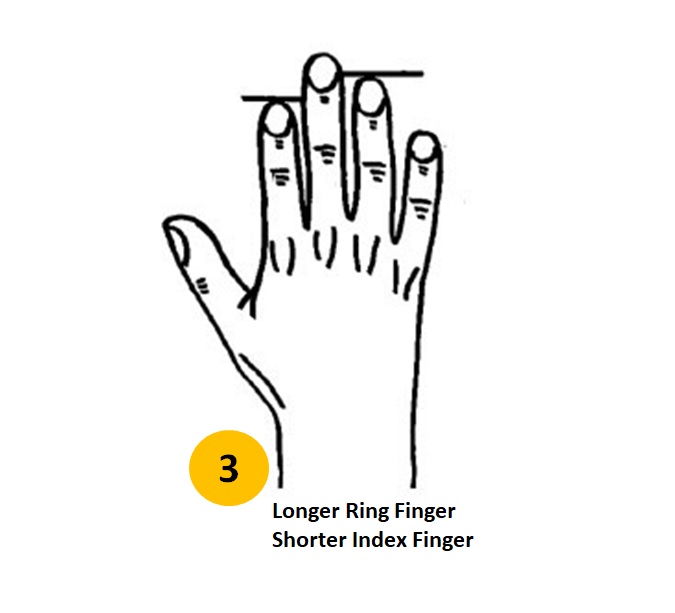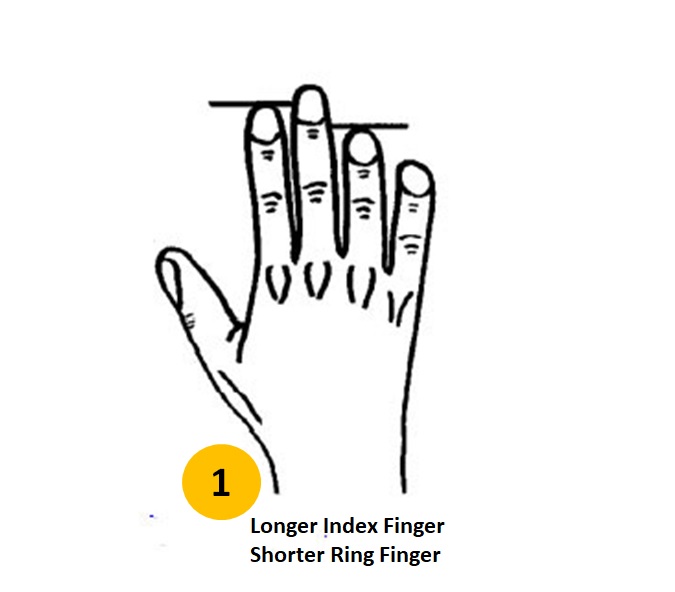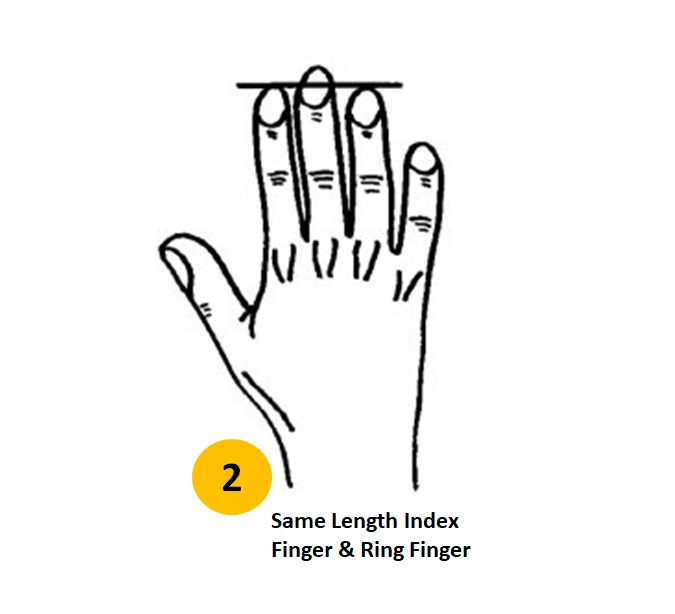The concept of finger length revealing aspects of one’s personality might sound like an old wives’ tale, but it has roots in scientific research. Known as digit ratio theory, this fascinating field suggests that the relative lengths of your index (2D) and ring (4D) fingers can provide insights into your personality traits, health, and even certain abilities. Let’s delve into the intriguing world of finger length and personality.
The Science Behind Digit Ratio
The digit ratio, particularly the 2D:4D ratio (the length of the index finger divided by the length of the ring finger), has been the subject of numerous studies. This ratio is influenced by the levels of testosterone and estrogen you were exposed to in the womb. Higher exposure to testosterone is linked to a lower 2D:4D ratio (a longer ring finger relative to the index finger), while higher exposure to estrogen is associated with a higher 2D:4D ratio (a longer index finger relative to the ring finger).
Low 2D:4D Ratio (Longer Ring Finger)

- Assertiveness and Confidence
Individuals with a longer ring finger compared to their index finger tend to exhibit greater assertiveness and confidence. This trait is often associated with leadership qualities and a proactive approach to life. - Risk-Taking Behavior
A lower 2D:4D ratio has been linked to a higher propensity for risk-taking. People with this trait might be more inclined to engage in adventurous activities, pursue entrepreneurial endeavors, and take financial risks. - Athletic Ability
Research suggests that a longer ring finger relative to the index finger is correlated with better athletic performance, particularly in sports requiring physical endurance and spatial skills. - Aggressiveness
There is evidence to suggest that a lower 2D:4D ratio can be associated with higher levels of aggression, both in competitive scenarios and personal interactions.
High 2D:4D Ratio (Longer Index Finger)
- Empathy and Nurturing
Individuals with a longer index finger compared to their ring finger are often found to have higher levels of empathy and nurturing tendencies. They may be more attuned to the feelings of others and excel in caregiving roles. - Verbal and Social Skills
A higher 2D:4D ratio is associated with stronger verbal and social skills. These individuals are typically good communicators and may excel in roles that require negotiation, teaching, or counseling. - Academic and Artistic Inclinations
People with a longer index finger often have a predisposition towards academic pursuits and artistic endeavors. They might show a greater interest in literature, music, and other creative fields. - Cautious and Detail-Oriented
A higher 2D:4D ratio can indicate a more cautious and detail-oriented personality. These individuals might be less inclined to take risks and more focused on planning and precision.
Gender Differences in Digit Ratios
Studies have shown that men generally have a lower 2D:4D ratio than women, reflecting higher prenatal testosterone exposure. This difference can help explain some of the average behavioral differences between genders, though it is essential to recognize the vast overlap and individual variation within each gender.
The Limitations and Controversies
While the digit ratio theory offers intriguing insights, it’s important to approach it with a degree of skepticism. Personality and behavior are influenced by a complex interplay of genetic, environmental, and social factors. Finger length is just one small piece of the puzzle and should not be used to make definitive judgments about an individual’s character or abilities.
Moreover, some researchers argue that the associations found in digit ratio studies are often modest and can be influenced by various methodological factors. Therefore, while digit ratio can be a fun and interesting topic to explore, it’s crucial to keep its limitations in mind.
The length of your fingers, particularly the ratio between your index and ring fingers, can offer a fascinating glimpse into certain personality traits and tendencies. From risk-taking behavior to empathy and communication skills, the 2D:4D ratio provides a unique lens through which we can explore the biological underpinnings of human behavior. However, it’s essential to remember that personality is multifaceted and cannot be wholly defined by a single physical characteristic. So, while you might find some truths in the length of your fingers, always consider the broader context of your experiences and traits.









